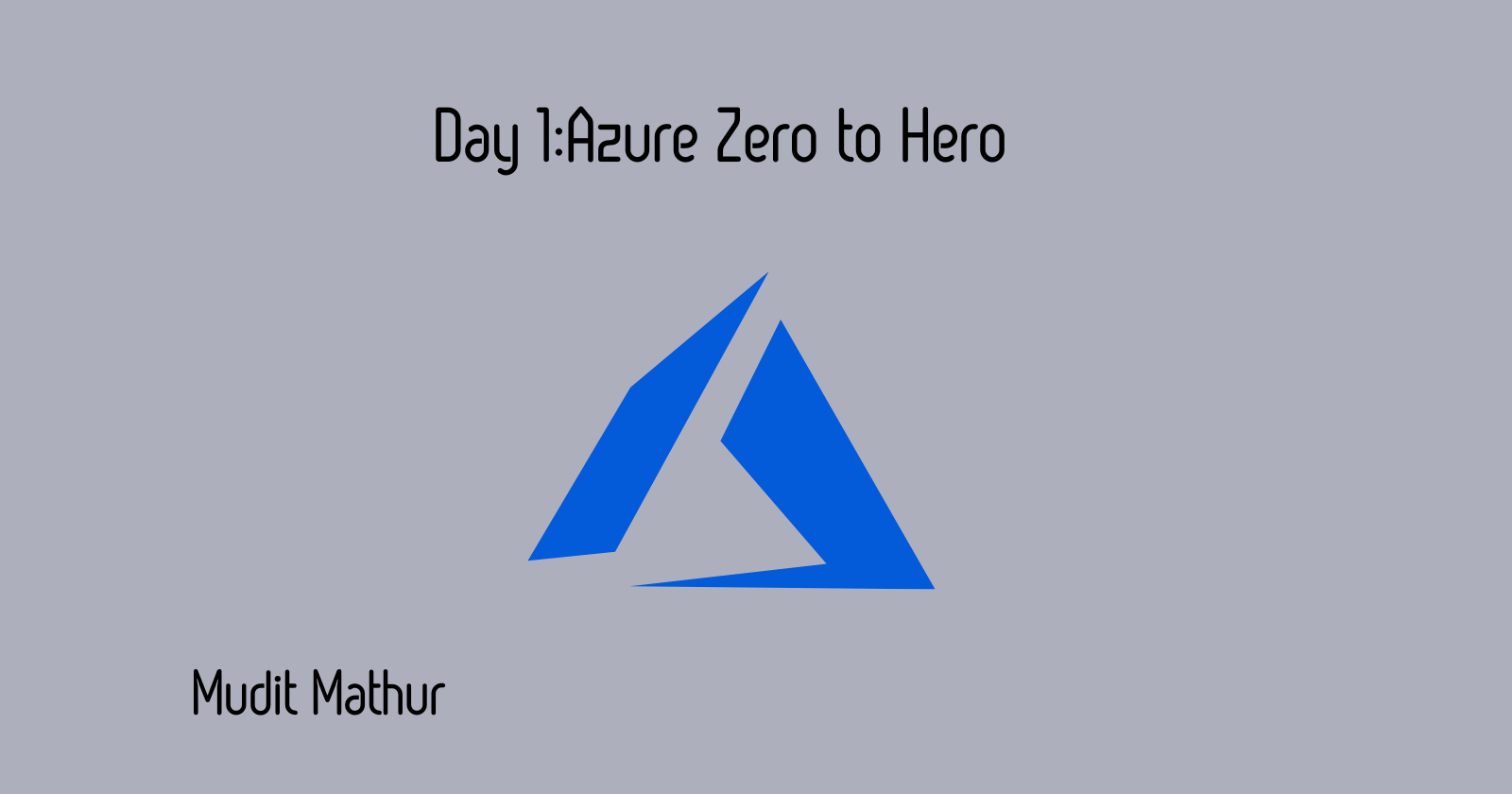Azure Zero to Hero Day — 1
 Mudit Mathur
Mudit Mathur
Exploring the Marvels of Cloud Computing 🌐
🤔 What is Cloud?
Cloud is a virtual wonderland where your files dance, software orchestrates, and myriad services await your command over the internet. Imagine a mighty computer in the vast web, at your service for tasks, eliminating the need for hardware ownership or physical management.
🚀 Understanding Cloud Computing
Cloud computing is a technological marvel delivering computing services through the internet. Users harness resources, applications, and storage without the burden of physical infrastructure. Services can be summoned from third-party providers (public cloud) or an organization’s personal servers (private cloud), nestled in global data havens.
🌍 Public Cloud:
- Who Uses It: Everyone, from individuals to businesses and organizations.
- What It’s Like: Envision a colossal, shared online computer space — like performing tasks, storing files, or using apps on the internet, accessible to all.
- Example: Think of Google Drive, Amazon Web Services (AWS), Azure, or GCP.
🔐 Private Cloud:
- Who Uses It: Exclusive to one organization or business.
- What It’s Like: Picture having your own digital haven, a private computer space accessible only to you and your team — no unexpected visitors allowed.
- Example: Companies relying on their own servers, government organizations, and banks.
🌐 Hybrid Cloud:
- Who Uses It: A mix of everyone, depending on needs.
- What It’s Like: Your private digital sanctuary, occasionally embracing the shared internet space for specific tasks or additional storage.
- Example: Businesses securing sensitive data in their private space but utilizing the public cloud for extra storage or specific tasks.
Terminology in Cloud Computing
🚀 Virtualization:
Virtualization is crafting a virtual instance of a system component — efficiently utilizing and managing resources by running multiple instances on a single physical infrastructure.
💻 Virtual Machine (VM):
A Virtual Machine is a software-based emulation of a physical computer — empowering the execution of multiple operating systems on a single physical machine.
🤝 API (Application Programming Interface):
API is a set of rules and protocols facilitating communication between different software applications — defining how software components should interact.
🌎 Regions:
Regions in cloud computing are geographic locations housing data centers — each region comprising multiple data sanctuaries.
🏰 Availability Zones:
Availability Zones are isolated locations within a region, equipped with independent power, cooling, and networking — designed to ensure high availability and fault tolerance.
⚖️ Scalability:
Scalability is a system’s ability to handle increasing work or expand to accommodate growth.
🌱 Elasticity:
Elasticity in cloud computing refers to dynamically scaling resources based on demand.
🚀 Agility:
Agility is the nimble adaptation to changes — cloud computing’s rapid deployment of resources and applications.
🌐 High Availability (HA):
High Availability ensures a system or application is operational and accessible for a significant portion of time, typically 99.9% or higher.
⚙️ Fault Tolerance:
Fault Tolerance is a system’s ability to operate without interruption in the face of hardware or software failures.
🔄 Disaster Recovery:
Disaster Recovery involves planning and processes for restoring data and systems after a natural or human-induced disaster.
⚖️ Load Balancing:
Load Balancing is the art of distributing network traffic or computing workload across multiple servers — ensuring no single server is overwhelmed.
Subscribe to my newsletter
Read articles from Mudit Mathur directly inside your inbox. Subscribe to the newsletter, and don't miss out.
Written by

Mudit Mathur
Mudit Mathur
Mudit Mathur is an experienced DevOps Engineer with expertise in AWS, CI/CD, and automation. He delivers tangible results by streamlining processes and fostering collaboration. Reach out to him at linkedin.com/in/mudit-mathur-535786146 or muditmathur121@gmail.com for efficient DevOps solutions.